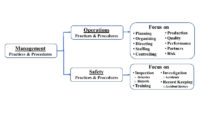With the advent of the industrial revolution factory job increased dramatically. At that time if workers got injured on the job their employer had no obligation to provide any assistance of any kind. Mostly they just hired someone else to take the disabled worker’s place. Over time this became a social issue and public opinion caused state legislator to look for a way to obligate businesses to provide some form of relief to their workforce. The first state enacted a worker compensation law in 1911. Other progressive states following soon thereafter with the last one getting around to it by 1948.
These workers compensation laws require employers to have workers' compensation insurance. Employees are entitled to receive prompt, effective medical treatment for on-the-job injuries or illnesses no matter who is at fault and, in return, employees are prevented from suing employers over those injuries. Workers' comp insurance provides basic benefits, including medical care, temporary disability benefits, permanent disability benefits, supplemental job displacement benefits and a return-to-work supplement, and death benefits.
Safety general practices
The National Safety Council (NSC) was founded in 1913 with a mission of eliminating preventable deaths in the workplace. The dramatic growth of automobile usage resulted in an unacceptable tide of 40,000-50,000 traffic-related deaths every year. So, in1925 the NSC came up with the three Es concept: Engineering, Education, and Enforcement to aid in traffic safety with the intent to deal with the problem. This also proved to simply H.W. Heinrich's 10 axioms for safety management devised to manage safe operations for industries. The engineering element address the hazards associated with the physical conditions and the protection of people from exposure to them. Education deals with providing the employee and drivers with training associated with the safe practices. And enforcement dealing with site and conditions inspections looking for physical hazards and people’s compliance with safe behaviors.
Insurance companies started offering different industries, policy providing coverage for potential worksite accidents, injuries and loss to deal with the cost associated with worker compensation obligations. These policies also provided rate reductions (insurance modification factor) to organizations who managed to have fewer losses than the industry at large. Brokers and insurance companies provided businesses some loss control services to assist in their efforts in trying to reduce accident and injuries associated with their production work in order to more effectively control their costs.
In 1931 HW Heinrich conducted a research study of over seventy thousand accident reports to find the causation of industrial accident. He found 88% were caused by some act on the part of the worker while performing their tasks. This study along with the insurance policy modification factor focused industries interventions on the worker’s actions in order to reduce injuries and control their costs. In 1966 FE Bird analyzed over 1.7 million accident reports and concluded that 95 % of injuries resulted from some act of the employees. This reinforced the efforts of various organization to concentrate on improvements designed to change worker’s behavior. (For more details, see my article: “The role of beliefs in accident prevention” April 5, 2022)
OSHA and safety
In spite of about 70 years since the start of passages of workers compensation laws and organization’s best efforts, injuries and fatalities still occurred, but at a somewhat reduced rate. To provide uniformity and further reduce accidents, injuries and fatalities the Federal government enacted the Occupational Safety and Health Act in 1970. OSHA developed safety standards which businesses were obligated to comply with.
Besides compliance OSHA also requires workforce training quite a few times throughout the standards. The agency also was given the authority to levy fines and penalties if they determined that organizations failed to maintain “safe” operations. This again refocused many organizations to adopt safety programs, and try to further reduce worker accidents. To some extent they managed to reduce injuries and fatalities, but even now, 50 years later the results are far from stellar!
The Bureau of Labor Statistics (BLS) collects and reports on occupational injuries and fatalities. The latest data available is for 2018, which reports worker injuries at over 2.8 million and fatalities at over 2550 for that year. There are a significant number of minor injuries for which reporting is not required, and of course there are “near misses” which but for luck did not result in an injury, as well. So, in spite of all these efforts workers still get injured and suffer with some even dying at work while earning a living.
The typical organizational safety management program is usually in written form, starting off with a statement professing to value employees and striving to provide them with an injury free work environment. These programs generally consist of policies, required procedures, expected practices, and general rules predominantly involving physical hazardous conditions in the worksite. The body of these programs usually is a regurgitation of safety standards, in order to comply with the governing requirements as promulgated by the state or federal jurisdiction.
The program also may refer to regular and special training, retraining, inspections, signage, feedback and possibly rewards for adherence with consequences for not following program requirements. The organization may provide employees with a handbook summarizing key program points. Some of the more progressive programs may also include specialized elements dealing with driving for the company, substance abuse, stretching exercises, etc.
Some thoughts
In review, three factors come to light regarding occupational safety rules: regulation, management and practices. Almost three million worker injuries are reported, with many more (non-lost time) which do not require reporting. And sadly, over two thousand five hundred die form severe injuries suffered on the job. An analysis of the hundreds of pages of OSHA standard promulgated by various jurisdiction highlights the fact that almost all of these standards deal with how to reduce and control physical hazards on work sites.
Given the two major accident causation studied found that most accident are the result of some action or behavior on the part of workers. Some may argue that worker behaviors do not cause 95% of the injuries or even 75% or even 50%, but only 25% or 15%. That is not the point as we are trying to prevent worker suffering and even low causation percentages are not acceptable and more importantly should have a way to be addressed by elimination or prevention. So, the prevailing approach to managing safety as engaged in by the different industries is not addressing the problem holistically as indicated by the over 100 years of efforts with the results indicated by the BLS statistics.
Conclusion
That being the case, indicates that to effectively and holistically approach the problem of occupational accidents, injuries and fatalities needs a major and complete review. Starting with the definition of safety. Safety is not a thing, it is a result, an outcome of actions. Safety is what you get if things are done properly and events go as planned. Accidents happen because things occur that prevent the task from proceeding as intended.
Fundamentally the risk of accident occurring is complex and multifaceted. To address it wholistically everything must be evaluated starting with the standards and regulation, programs, polices, oversight, management, processes, inspections, metrics, procedures, education, training, communication, feedback as well as control. The management, oversight and control of safety must be the responsibility of operations. (Look for further information in future articles.)



